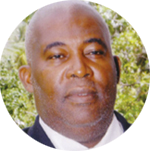
WELCOME students to the Open School for the Second term for the academic or school year 2022 to 2023, and let me wish you a fruitful academic year. The school is open to parents, guardians, teachers, students and members of the public. It is my hope that students will acquire knowledge and skills which will enable them to improve student achievement in Mathematics.
Today’s lesson is the first in the series on “Improving student achievement in Mathematics.” At the end of the lesson, students will be able to (1) Identify a constant problem for students in Mathematics, and (2) Give one important aspect of the teaching of Mathematics.
High achievement in Mathematics has been a constant problem in our Education System. In fact, for all of the 42 years I spent in our Education system, Mathematics has posed a real challenge to many students both at the Primary and Secondary levels of the system.
I have chosen a year at random to investigate; 2014. Specifically, we will look at the 2014 May/June CSEC Examination Results in mathematics. In that year 2264 students wrote the examination and 1132 exactly 50% of the students fell within the failing grades 1V, V and V1. 389 students attained grade 1V; 642 attained grade V and 101 attained grade V1. This is a situation that needs to be improved. I’m sure you agree!
Now let us look at the 2022 performance in Mathematics for the students who wrote the CPEA Examination. Some 2032 students wrote the CPEA Examination. 945 students scored below the national average or (National Mean) in all subject areas.
Specifically, the National Mean (NM) in Mathematics is 65.15%. That is a great improvement in performance from what used to exist for many years. I have been keeping track of examination results even though I am no longer in mainstream education in St. Lucia.
Our students need to just as well in Mathematics as they did in English Language in the CPEA Examination with a National Mean of 75.69%. The year this happens, if I am still alive, I will have a big celebration.
But how can we achieve that? Firstly, teachers and facilitators of learning must provide the opportunity for students to learn Mathematics. The extent of the students’ opportunity to learning Mathematics content bears directly and decisively on student achievement in Mathematics.
Now opportunity to learn refers to the knowledge and skills which are embodied in the content of the lessons to be taught. In other words in planning a lesson in Mathematics teachers and facilitators of learning must be clear on the concept to be taught, the level at which it should be taught, the level of involvement of the student or learners, and what is to be achieved at the end of the lesson.
Let me say very quickly, that the amount of time in teaching Mathematics or the amount of time expended on the subject or in education we say instructional time spent on Mathematics could lead to much student progress in Mathematics.
I wish to point out that the selection of textbooks in Mathematics is very critical in achieving progress in Mathematics. By that I mean the material in those book should constantly provide new challenges for students to go at.
Several years ago, I knew that the Ministry of Education had put a panel of teachers qualified in the field, to select books for the various grades. I think this should be continued. Additionally, there should be a liaison between the book sellers and the selection panel to ensure that the Mathematics books recommended are received by the book sellers on time to make those books available to the students on time.
Another very important aspect on the teaching of Mathematics is that teachers and facilitators of learning must focus on meaning.
Focussing instruction on the meaningful development of important mathematical ideas increases the level of student learning.
There is a wide body of research which shows that an emphasis on teaching for meaning has positive effects on student learning which would allow for greater retention of the content being taught and an increased likelihood that the ideas retained will be used in new situations of life.
In the classroom situation, whether at school or at home, teachers and facilitators of learning must emphasize the mathematical meaning of ideas being discussed in a lesson and how these ideas, concepts, and skills are connected in many ways to other mathematical ideas in a logical and sensible manner.
I usually like to give examples: Let’s say the teacher or facilitator of learning is teaching the concept of area of a rectangle. The teacher introduces the rectangle and the students already know that the rectangle has two lengths and two widths which they learnt when she taught the perimeter of a rectangle. But they are going to learn to find the area of the rectangle using prior knowledge.
The teacher will indicate that the length of the rectangle is 8 metres and the width 5 meters. He or she will guide them to draw lines one meter across the length and one-meter lines across the width. The resulting figure is a rectangle with a number of squares on the surface which will all add up to 40 square metres.
Now the teacher will guide them to discover the Mathematical way of arriving at 40 square metres; that is 5 squares downwards times (X) 8 squares across would give the 40 square metres on the surface of the rectangle.
Further the teachers would give the students several other rectangles to explore. In the classroom and at home as homework to consolidate the concept of area. They will then discover for themselves that the formula will apply to all rectangles.
Now two questions for you. (1) What has been a constant problem for students in Mathematics? (2) Give one important aspect of the teaching of Mathematics.












